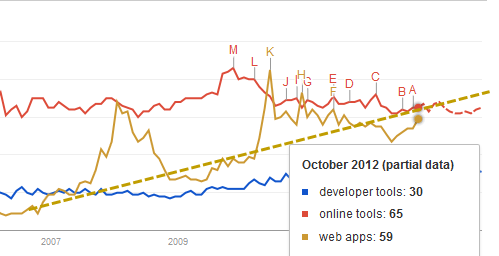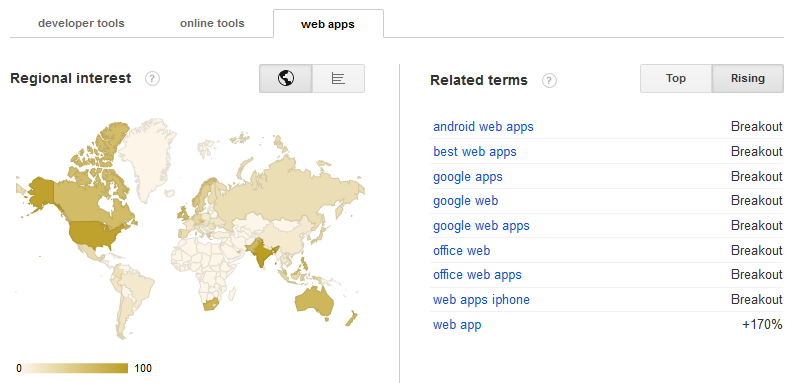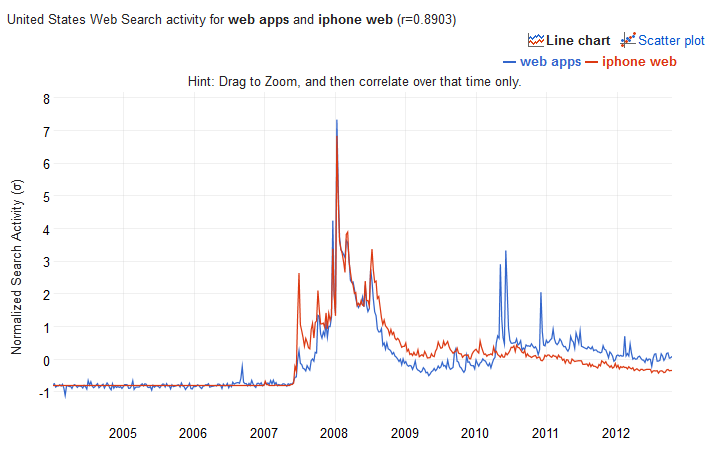In a previous post on “Online Research Methods” I demonstrated some of the research techniques available to SEOs, writers, marketing experts and big data analysts. During my own research on web trends I have made some interesting discoveries that can help you learn about upcoming web search behavior related to your own niche.
I’d initially like to expand on use of the research methods I use from the original research method infographic. I have a personal interest in finding out what our own audience would love for me to write about, either through feedback, or understanding our audience demographic better. Taking a refreshing new look at where your audience comes from once in a while is a great exercise once in a while from a marketing standpoint.
First off I’d like to show you the “Google Trends” tool. There is a similar tool in Adwords that shows you a volume of search against certain keywords. The Adwords Keywords tool is insufficient for projecting trends for as there is no historical data. To ascertain what trends are breaking out, what is current, and relevancy to other behaviors that are following the same rate of change and seasonal behaviors, you’ll need the Google Trends tool.
Adwords Keywords tool is a great tool for scraping together a bucket list and finding which keywords present current opportunity for optimizing your site or advertising campaign. If you want to get down to the real nitty-gritty and find out why the opportunity exists, you need to find which opportunities are growing, plateauing, or falling.
Below is a graph I screenshot from the Google Trends tool. It has it’s own forecasting tool in it, and a bunch of related terms suggested for you to plug in and test out. I simply used search terms relevant to our audience taken from our popular posts and after a few permutations of related keywords. I found something that stood out as a rising trend that warranted further investigation. I’ve overlaid the trend graph with a the rough projection so you can see what caught my attention:
Out of all the interest in online web applications and and developer tools, the term “web apps” seems to show a distinct seasonal activity on top of a steadily increasing trend.
Clicking on the “web apps” tab gives us further segmented information on this activity. Google shows us not only is the term rapidly increasing in frequency of search but alongside it are many new breakout terms related to mobile devices. Note the mention of “android web apps”, and “web apps iphone“.
Where Is This Online Trend Behavior Coming From
Head on over to Google Correlate, which finds search patterns which correspond with real-world trends. Here we can see what consumer driving forces are behind online trends by matching search volume patterns. Search terms may not be related, but by comparing seasonal behaviors you can tie-in the effect of the real world events.
In the case of the search term of “web apps”, Google suggests that the behavior for “iphone web” closely matches all the smaller seasonal peaks and possibly sale periods. Google has in it’s algorithms a correlation coefficient called “r”. The closer the correlation coefficient is to 1, the less variance there is between two trending behaviors.
I will certainly be paying closer attention to iPhone developments and releases now, with a view to how they impact our mobile app behavior.



